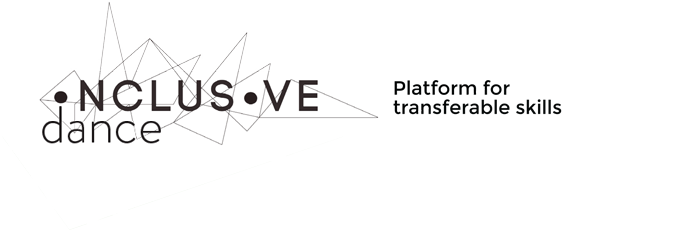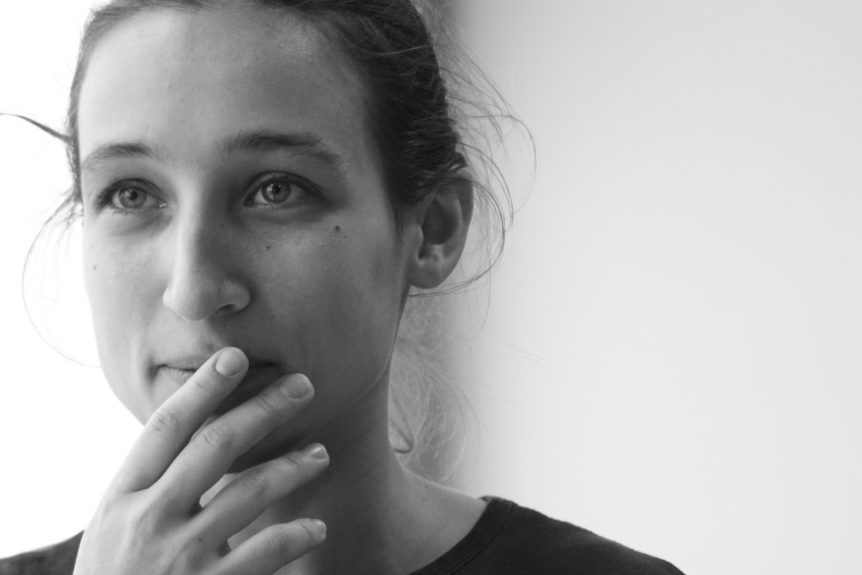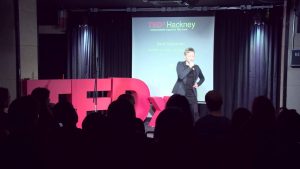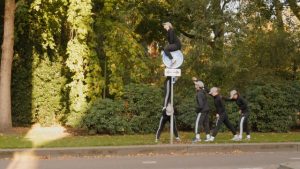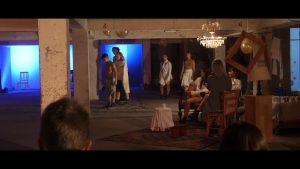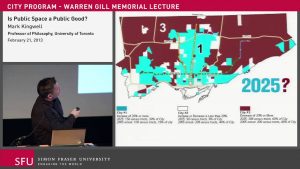by Veronika Simkova
Kateřina Dietzová studied at Duncan Centre Conservatory in Prague and as an exchange student at School for New Dance Development in Amsterdam. Since then she works as a dancer and performer in various projects in Netherlands and Czech Republic. Nowadays she studies osteopathy.
“Since 2013 I collaborate with a Dutch organization Dance for Health, which is focusing on developing a dance program for people with Parkinson’s disease. Within this program I started to use dance improvisation while teaching these classes, in order to give a possibility to each specific dancer research his own mobility and natural way of moving. This approach has led me to thinking of incorporating other somatic dance approaches, Feldenkrais method and others as an alternative movement therapy for people with Parkinson. The aim of such therapeutic dance is getting to know possibilities of own body and possible gradual integration of the physical symptoms into the daily life functioning,” says Kateřina.
How did you get to the dance for Parkinsons classes?
Quite by coincidence, organization Dance for Health was just starting initiative in Netherlands and they were looking for dancers interested in this program, I was in their very first training workshop. Everything was very intuitive back then and it was rather hard to grasp the essence of what we are actually doing in that class. The supportive fact was that they were looking by preference for dancers with active artistic carrier and not so much for dance therapists or other therapists who are as well interested in dance. The reason was to take out the dancer (who happens to have a Parkinson disease) out of the role of being a patient. I find that approach really interesting. I guess that in the end it offered to each of us a freedom to a certain degree of what do you do as a leader with your dancers in comparison to strictly targeted exercises from physiotherapists for example.
How does such a class look like?
We have a strong recommendation there, because it would be hardly survivable for all our dancers. Part of a class is seated on the chair, part standing behind or next to a chair as a leaning support and part in a free space. The leader of the class should however always be prepared to transform any exercise into seated version for anybody who needs it.
Which dance/somatic approaches do you use in your classes?
In my class it’s a lot about body awareness and attention to segmented body parts or body layers and how the body organizes itself in reaction on that. And movement from there. So lot of visualisation, improvisation. I’m not so much into learning steps or little choreographies, even though it’s sometimes so much fun while “just to dance on music”, so I’m learning how to do that as well.
Specifically from somatic methods I tried certain of elements from Body-Mind Centering, proposals based on movement of the body fluids, and to my surprise that works very well. There are amazing proposals from Feldenkreis and Alexander techniques concerning innervation, stability and functional breathing – we are in a research of this right now.
What is the sense/aim of dance for people with Parkinson?
I think it has several layers and for each of the dancers some layers are more present than others. Very generally, on a physical level improving the mobility and reducing the rigidity of the body, training of coordination, core strength and stability. On an internal personal level I imagine it’s time where the person spends time with his body in a playful dialogue (and not directive dialogue of demands on the body, which has reduced capability to fulfill them). There is a strong layer of social integration and possibility of self-expression and sharing in the context of a group or community. It is as well about satisfaction from “working on myself” and ability to take some part of personal responsibility for own body back from the hands of the doctors and medication.
Is it your profession or is it only a supplement to your profession of a dancer?
For me it’s one of the activities which I do with my dance, next to being a performer, a dance-maker, an improviser or other activities. The good part is that they all inform each other, so it feels like a coherent interest and not that it’s tearing me apart.
I guess I chose for many-faced dance carrier, the same as some people choose to dedicate themselves deeply into one aspect of being a dancer – performer for example.
How did you imagine your dance carrier before entering a dance school? What was so attractive on being a dancer?
I don’t know what I imagined it would be like; I don’t think I was thinking about it. While dancing on the stage I was experiencing an empowerment like from nothing else in my experience, so I decided to follow it I guess.
How did this image of future carrier evolved during your school years?
The attention from being on the stage shifted on the process of creation. Some of very strong experiences which shifted my mind happened in the studio or while improvising or unnoticed and still I was shifted. Probably there I started to recognize the strength of dance as a therapeutic tool and the possibility of working on myself through that.
Concerning a real plan on my carrier of a dancer, still nothing. I just wanted to be part of rehearsing, part of the research, part of performing.
Has anything shifted again thanks to classes for parkinsons?
I’m noticing a change, how I lead dance classes in general. Andrew from Dance for Health introduced a rule: “there is no failure, nobody is wrong, nobody is early, nobody is late” and from there we started to work with the concept of reframing. Before, I wouldn’t allow this to myself or during my work so easily. Suddenly the whole concept of leading the class got much less ambitious and this was quite a change in comparison to “professional world”.
And I’m recognizing the full strength of dance as a community builder.
Is the content of your classes for parkinsons or the way of leading it nurtured by your active profession as a dancer?
For me, it works really together. There are many proposals I bring in the class which came out of different rehearsal processes I’m involved in. Sometimes it’s a bit off and sometimes there beautiful things coming out. I’m noticing the Parkinson dancers are as well happy to be an inspiration to an artistic process. In Bassano del Grappa (IT), where the Dance for Health program is running for couple of years now, the interest got so serious, that every summer a young choreographer is invited to make a dance piece with Parkinson dancers in the period of several weeks. There it works as a personal challenge, but as well for the feeling to be part of something, to contribute to the community by own creativity.
